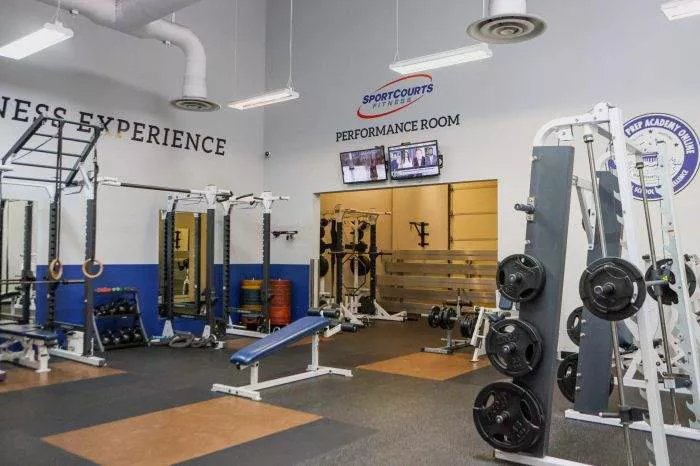Choosing the right gym can be a daunting task, especially with the multitude of options available today. Whether you’re a seasoned gym-goer or a newcomer to the fitness scene, finding a gym that meets your needs and preferences is essential for achieving your fitness goals. In this comprehensive guide, we’ll explore the key factors to consider when evaluating a gym to determine if it’s a good fit for you.
1. Location and Accessibility:
One of the first things to consider when evaluating a gym is its location and accessibility. Choose a gym that is conveniently located near your home, workplace, or daily commute route. This will make it easier for you to incorporate gym visits into your routine and reduce the likelihood of skipping workouts due to inconvenience. Additionally, consider the gym’s hours of operation to ensure that they align with your schedule.
2. Facilities and Equipment:
A good gym should have a wide range of facilities and equipment to accommodate various fitness preferences and goals. Look for gyms that offer state-of-the-art cardio machines, strength training equipment, free weights, functional training areas, and group exercise studios. Check the condition and cleanliness of the equipment to ensure that it is well-maintained and safe to use. Additionally, consider any specific amenities or features that are important to you, such as swimming pools, sauna, steam room, or childcare facilities.
3. Qualified Staff and Personal Trainers:
The staff and personal trainers at a gym play a crucial role in providing guidance, support, and motivation to help you achieve your fitness goals. Look for gyms that employ certified and knowledgeable fitness professionals who can offer personalized workout plans, instruction, and advice. Consider scheduling a consultation or trial session with a personal trainer to assess their expertise, communication style, and compatibility with your fitness objectives.
4. Cleanliness and Hygiene:
A clean and hygienic environment is essential for a positive gym experience and the prevention of illness and injury. Pay attention to the overall cleanliness of the gym, including locker rooms, bathrooms, exercise areas, and equipment. Look for gyms that maintain high standards of cleanliness, regularly sanitize equipment, provide ample cleaning supplies for members, and enforce hygiene protocols such as towel usage and handwashing.
5. Variety of Classes and Programs:
Group exercise classes can add variety, motivation, and social interaction to your fitness routine. A good gym should offer a diverse selection of classes and programs to cater to different interests and fitness levels. Whether you’re interested in cardio, strength training, yoga, Pilates, dance, or martial arts, choose a gym that provides a range of classes led by experienced instructors. Consider participating in a few classes to gauge the quality, atmosphere, and suitability for your preferences.
6. Community and Atmosphere:
The atmosphere and sense of community at a gym can greatly impact your motivation, enjoyment, and consistency in attending workouts. Look for gyms that foster a positive and supportive environment where members feel welcomed, encouraged, and respected. Consider visiting the gym during peak hours to observe the atmosphere, interaction among members, and availability of staff assistance. Additionally, inquire about any social events, challenges, or member engagement initiatives organized by the gym.
7. Membership Options and Pricing:
Evaluate the membership options, pricing plans, and payment terms offered by the gym to ensure that they align with your budget and preferences. Look for gyms that offer flexible membership options, such as month-to-month contracts, annual memberships, or pay-as-you-go plans. Consider any additional fees or charges, such as initiation fees, annual maintenance fees, or cancellation fees, and compare them with the value and amenities provided by the gym.
8. Safety and Security:
Safety and security should be top priorities when selecting a gym to ensure a comfortable and secure workout environment. Look for gyms that have adequate safety measures in place, such as emergency exits, first aid kits, defibrillators, and trained staff in CPR and AED usage. Additionally, inquire about the gym’s policies regarding member supervision, access control, surveillance cameras, and incident reporting procedures.
9. Reviews and Recommendations:
Before committing to a gym membership, research reviews and recommendations from current and former members to gain insight into their experiences, satisfaction levels, and any potential issues or concerns. Consider reading online reviews on platforms such as Google, Yelp, or social media, as well as seeking recommendations from friends, family, or fitness communities. Pay attention to recurring themes, positive feedback, and red flags that may influence your decision.
10. Trial Period and Satisfaction Guarantee:
Many gyms offer trial periods or satisfaction guarantees to allow prospective members to experience their facilities and services before making a commitment. Take advantage of these opportunities to test out the gym, explore its amenities, and evaluate its suitability for your needs. Use the trial period to attend workouts, interact with staff and members, and assess the overall atmosphere and experience. If the gym offers a satisfaction guarantee, inquire about the terms and conditions to ensure a risk-free trial.
Conclusion
In conclusion, choosing a good gym requires careful consideration of various factors, including location, facilities, staff expertise, cleanliness, atmosphere, membership options, safety, and reviews. By assessing these criteria and conducting thorough research, you can find a gym that aligns with your goals, preferences, and lifestyle, setting you up for success on your fitness journey. Remember that the best gym for you is one that not only meets your physical needs but also fosters a supportive and motivating environment conducive to long-term health and wellness.
Related Topics:
The 4 2 1 Workout Combo: A Comprehensive Guide to Training Success
The Power of Small Weights in Bodybuilding: Strategies and Benefits


